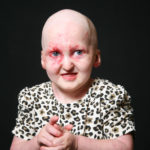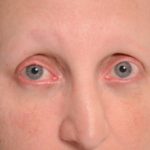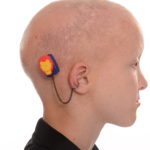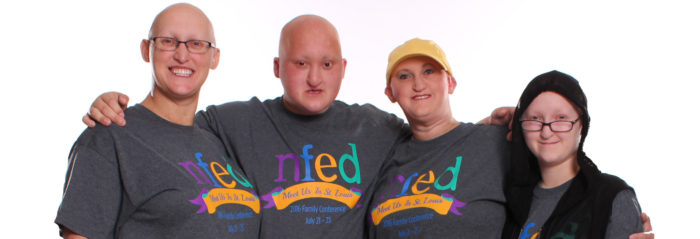Synonyms
- AEC syndrome
- Hay Wells syndrome
- Rapp Hodgkin syndrome is now considered a part of the disorder spectrum.
The clinical findings of ankyloblepharon-ectodermal defects-cleft lip and/or palate syndrome can overlap with those of other ectodermal dysplasia syndromes and are variable in presentation. This complicates diagnosis and further characterization of these disorders.
Ankyloblepharon-Ectodermal Defects-Cleft Lip and/or Palate Syndrome is a Rare Genetic Condition Characterized by
 Teeth
Teeth
- Missing (hypodontia)
- Conical shaped teeth
Sweat Glands
- A reduced ability to sweat (hypohidrosis)
 Skin
Skin
- Fragile skin
- Chronic, recurrent erosions on the scalp, palms, and soles
Scalp erosions and skin erosion can be complicated by life-threatening infections in infancy which often heal with atrophic/cribiform scarring. The congenital erythroderma in AEC may mimic epidermolysis bullosa (EB) or a collodian baby (skin that resembles a yellow, tight and shiny film) or dried collodion (sausage skin).

Hair
- Sparse, fine hair (hypotrichosis)
- Can be brittle, coarse or wiry with pili torti
- Patchy alopecia (lack of hair)
- Eyebrows, eyelashes and body hair may also be sparse or absent.
Nails
- Small
- Hyperconvex
- Thick
- Hyper-ridging
- Missing
 Eyes
Eyes
- Eyelid fusion, also known as ankyloblepharon
- Corneal erosions
- Blepharitis (chronic inflammation of the eyelid)
- Conjunctivitis (pink eye is an inflammation of the outermost layer of the white part of the eye)
- Absence of lacrimal and meibomian glands
 Ears
Ears
- External portion of the ear (auricles) are cup shaped
- Small superior pinna (the visible part of the ear that resides outside of the head)
- Tortuous external canals (twisted)
- Recurrent ear infections (otitis media)
- Secondary conductive hearing loss
Other
- Cleft lip and/or palate
- Lacrimal duct atresia missing or sparse (orifice or passage in the body is [usually abnormally] closed or absent)
- Missing or sparse eyelashes/eyebrows, and misaligned eyebrows.
- Extra (supernumerary) nipples
- Fused fingers and toes (syndactyly)
- Urethra in the male where the urinary opening is not at the usual location on the head of the penis (hypospadias)
Diagnosis
A physician can diagnose AEC on the basis of physical features. Symptoms to look for in newborns:
- Ankyloblepharon
- Cleft lip and/or palate
- Denuded skin/skin erosions
- Might include intolerance to heat. May be irritable in warm environments or may have unexplained fevers.
Causes of AEC Syndrome
- AEC syndrome is caused by changes in the TP63 gene.
- A parent may pass the changed gene to a child. The gene can also be changed in a child without either parent having the changed gene.
Genetic Testing
Testing is available for AEC syndrome.
AEC Inheritance
Ankyloblepharon-ectodermal defects-cleft lip and/or palate syndrome is inherited as an autosomal dominant disorder. An affected individual has a 50% chance of passing the gene to a son or daughter.
Learn more about AEC syndrome at Online Mendelian Inheritance in Man.
From the NFED Family
Listen to Maggie and Ameila, mother and daughter, as they talk about their experience with AEC syndrome.
“It’s hard to be different, and it’s hard to be so obviously different. But, everyone has their own differences, even if you don’t have ectodermal dysplasias or skin disorders.”
Amelia
You can also read about the Brown family’s experience with AEC when Erin was born with severe skin erosion. Virginia Higgins talks about how she manages her body temperature as a runner. Finally, read grandma, Donna Garrett-Miller’s story as she shares how her family rallied when Noah was born with AEC syndrome.
Other Resources
AEC Syndrome: What to Know if Your Baby is Affected
Missing Proteins May Contribute to Skin Fragility in AEC Syndrome
